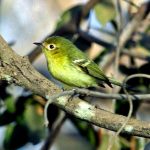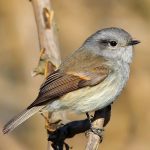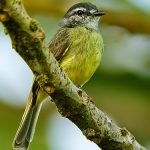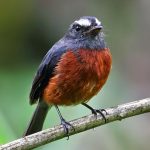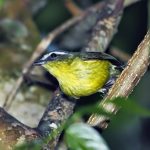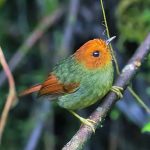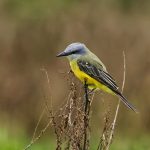Grey-backed tachuri
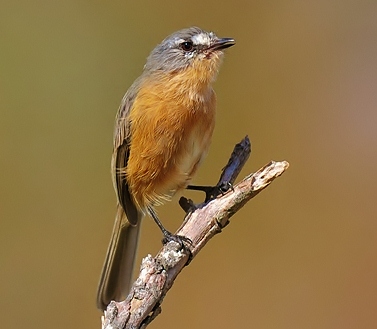
 |
| Photo by Rafael Fortes (Bird Forum) |
Common name:
grey-backed tachuri (en); papa-moscas-de-costas-cinzentas (pt); tyranneau bridé (fr); tachurí gris (es); graunacken-grastyrann (de)
Taxonomy:
Order Passeriformes
Family Tyrannidae
Range:
This South American species is endemic to south-eastern Brazil, being found from Bahia to Minas Gerais and northern São Paulo.
Size:
These birds are 10 cm long and weigh 6 g.
Habitat:
Grey-backed tachuris are found in arid mountain scrublands, deserted pastures and rocky outcrops in savannas and dry grasslands, at altitudes of 900-2.300 m.
Diet:
They feed on small arthropods, namely Coleoptera, Hemiptera, Lepidoptera and Orthoptera.
Breeding:
These birds breed in June-December. The nest is a deep cup made of grasses, leaf fragments, flowers and other plant fibres, and lined with feathers. The nest is placed in the fork of a branch stemming directly from the trunk of a bush, up to 1 m above the ground, and it is attached to the branches with spider webs and silk from butterfly cocoons. The female lays 2 white or light cream eggs, which she incubates alone for 16-19 days. The chicks are fed by both parents and fledge 15-18 days after hatching, but may continue to receive food for another 1-3 weeks.
Conservation:
IUCN status – LC (Least concern)
This species has a relatively large breeding range, but it is described as uncommon. The population is suspected to be in decline owing to habitat loss caused by conversion to cattle ranches and mining operations, but it is not considered threatened at present.
